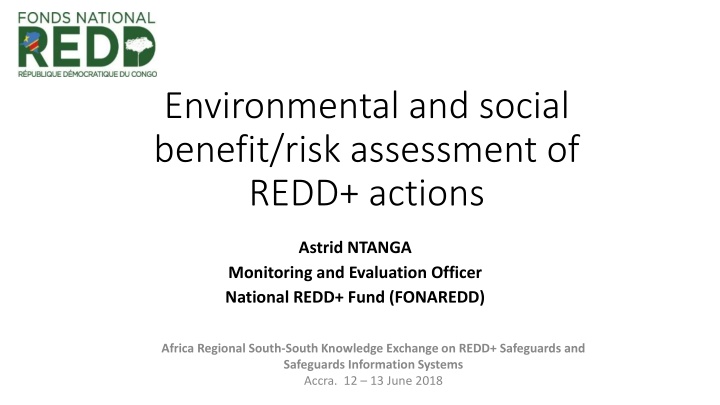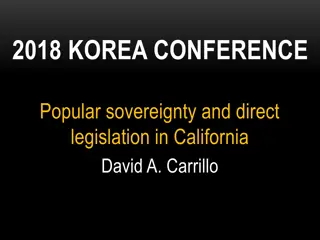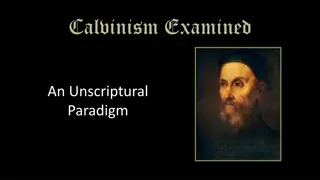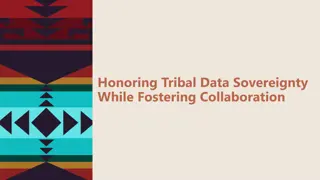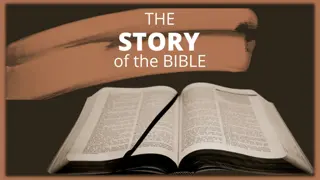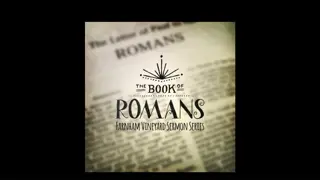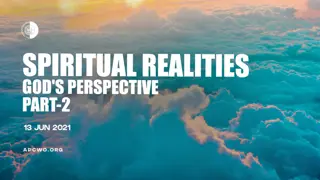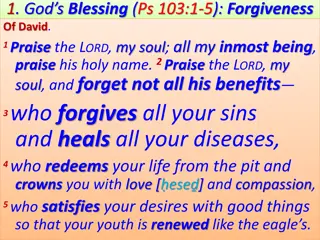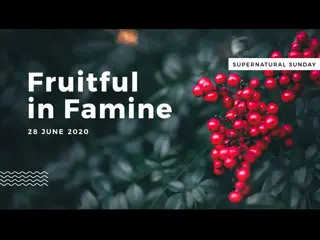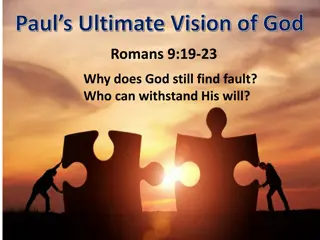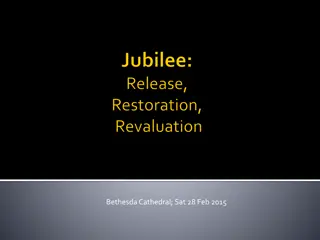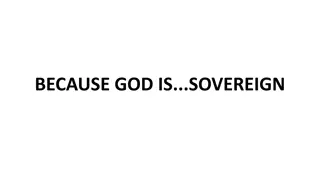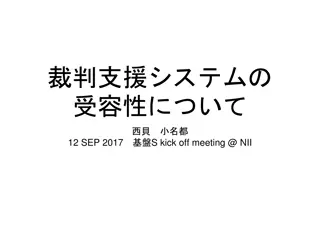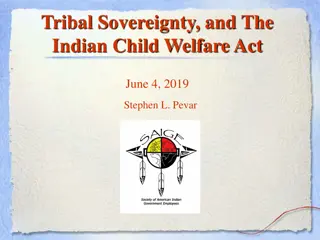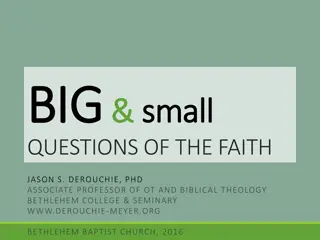The Sovereignty of God and the Purposes of His People
The biblical narratives of Daniel 1:1-7, reflecting on God's sovereignty in the reign of Jehoiakim and Nebuchadnezzar, and the faithful response of His people facing challenges in Babylon. Discover how God's purposes unfold through the lives of Daniel and his companions.
Download Presentation

Please find below an Image/Link to download the presentation.
The content on the website is provided AS IS for your information and personal use only. It may not be sold, licensed, or shared on other websites without obtaining consent from the author.If you encounter any issues during the download, it is possible that the publisher has removed the file from their server.
You are allowed to download the files provided on this website for personal or commercial use, subject to the condition that they are used lawfully. All files are the property of their respective owners.
The content on the website is provided AS IS for your information and personal use only. It may not be sold, licensed, or shared on other websites without obtaining consent from the author.
E N D
Presentation Transcript
Environmental and social benefit/risk assessment of REDD+ actions Astrid NTANGA Monitoring and Evaluation Officer National REDD+ Fund (FONAREDD) Africa Regional South-South Knowledge Exchange on REDD+ Safeguards and Safeguards Information Systems Accra. 12 13 June 2018
Overall Overall REDD+ REDD+ Readiness ReadinessProgress in DRC Progress in DRC DRC got engaged in the REDD+ process in 2009; National REDD+ Strategy validated in Ministers Council in November 2012; Investment Plan development in 2015
Benefits Benefits and Risks and Risks Assessment Assessment under under SESA SESA 1. Development of the Environmental and Social Management Framework (ESMF); 2. Development of specific frameworks (PA, SC, Protected Areas, Resettlement Plan and Pesticide Use); 3. Public Consultations / National and Provincial Workshops; 4. Meetings with ministries in charge of sectors with a direct or indirect impact on deforestation; 5. National standards based on Cancun principles; 6. Risk Management Matrix
Strenghts & Opportunities 1. Strenghts: Mobilization of $ 200 million for the implementation of the REDD + investment plan with the Central Africa Forest Initiative (CAFI) Fund; Mobilization of ERPA Program funding including results-based payments under the WB Carbon Fund; Funding of sectoral and integrated programmes; Development of the risk management matrix; Participatory management matrix;
Strenghts & Opportunities 2. Opportunities Coordination of various sources of funding aligning them with the national objectives of a low-carbon development vision Implementing legislation, including laws covering important areas of environmental and social management
Weaknesses & Challenges 1. Identified weaknesses Each National REDD+ Fund (FONAREDD) implementing agency has its own methodology for the Environmental and Social Assessment system; Institutional overlap in the implementation of codes and laws e.g. Congolese Environment Agency and the Ministry of Mines (law, mining code); Insufficient legislation: health and safety of communities
Weaknesses & Challenges 2. Challenges : Harmonisation of methodology to elaborate the system of Environmental and Social Assessment; Coordination of actions on socio-environmental standards by a public structure How to structure our Safeguards Information System (SIS) given the weakness identified above
Lessons leant Lessons leant 1. The risk and benefit assessment process, as well as the safeguards development approach, are based on the same principles of transparency and broad and inclusive participation. 2. The framework of reference must remain "the Cancun guidance". 3. For the DRC, since REDD + interventions address both mitigation (reduction of emissions), sustainable management and poverty reduction, it is implemented through policies and reforms as well as investments. Thus, in addition to an Environmental and Social Management Framework (ESMF) and Specific Frameworks we have to adapt to different types of interventions 4. The approach to developing safeguards based on broad and inclusive participation remains the best and allows for the achievement of strong and sustainable results over time.
